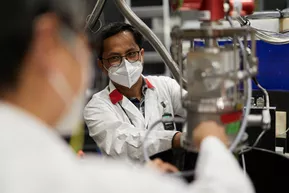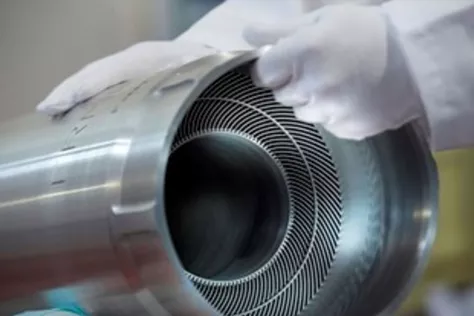The FRM II fuel element
The fuel element of the FRM II is a hollow cylinder approx. 1.3 metres long, 24 cm in diameter and with a total weight of 53 kg. It contains around 8 kg of uranium, which is enriched with up to 93 % of the fissile uranium 235U. The fuel used is U3Si2, which is dispersed in aluminium.
At the end of a cycle (= 60 days), the spent fuel element is discharged under water (natural shielding against radiation) and transferred to the decay pool of the FRM II, where it is stored for at least 6.5 years.
There are currently (as of March 2022) 47 spent fuel assemblies in the decay pool, which is designed with a capacity of 50 places.
Use of the FRM II fuel elements

The Heinz Maier-Leibnitz Zentrum (MLZ) at the Research Neutron Source is a leading centre for cutting-edge research with neutrons and positrons. It has developed into a global centre of attraction for scientists from a wide range of disciplines.
Every year, more than 1,200 researchers from the fields of physics, chemistry, biology, engineering and medicine work on issues to solve major social challenges of the future in the areas of technical innovation, health, mobility and energy supply.

The scientists publish their findings in more than 300 scientific publications per year, making them available for new developments. Industrial customers also use the services of the research neutron source and, last but not least, the neutrons produce important radioisotopes in the fight against cancer.
